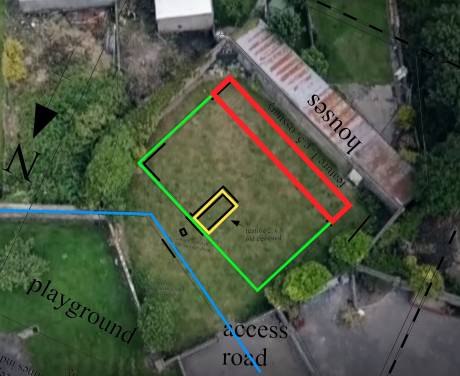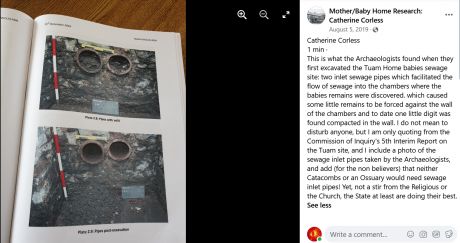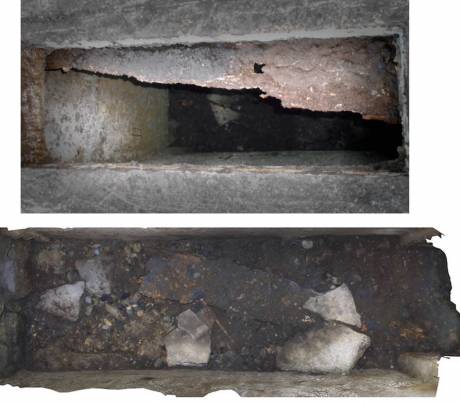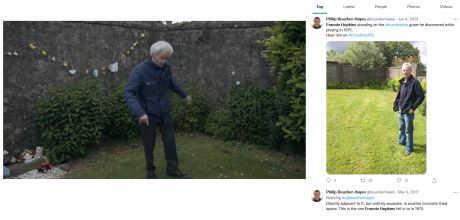|
Blog Feeds
Anti-Empire
Human Rights in IrelandIndymedia Ireland is a volunteer-run non-commercial open publishing website for local and international news, opinion & analysis, press releases and events. Its main objective is to enable the public to participate in reporting and analysis of the news and other important events and aspects of our daily lives and thereby give a voice to people.
Lockdown Skeptics
Voltaire NetworkVoltaire, international edition
|
Review of the film Missing Children, on the Tuam Children’s Home national |
history and heritage |
opinion/analysis national |
history and heritage |
opinion/analysis
 Sunday December 05, 2021 13:22 Sunday December 05, 2021 13:22 by Brian Nugent by Brian Nugent
 A major film was released about the Tuam Children’s Home recently, a joint production by RTE, the Irish State Television station obviously, and ITV in the UK. It was extraordinarily harsh in describing this institution, others like it and indeed Ireland in general for those years of the 1920s-50s. In this writer’s opinion, it left a lot to be desired in its accuracy in reference to this Home and this article is an attempt to set the record straight. The first and most important issue of course is the question of whether or not the bodies of children were laid to rest in a disused septic tank, for which see the accompanying diagram and description here, followed by the other great issue, that of the mortality rate in these Homes. Map of the layout of the Tuam Home Graveyard
“Frannie nudge-bumped Barry, and the younger lad fell in. He started to cry, as any boy would, so Frannie pulled him out and then the two boys were running away, laughing in fun or out of fright.” 4 But this couldn’t be describing the structure found by the excavations of the Commission, which only have entrances about 29cm by 84cm wide. Even for a boy you cannot just fall in, you would have to deliberately enter an entrance like that. Clearly what Frannie found is different to what the Commission found, either the former was superceded by the creation of the latter c.1980 or Frannie’s spot is still there but just not been excavated yet. I guess this doesn’t matter very much but it shows how the film makers are carefully editing their sources to come up with what they regard as a coherent narrative, as opposed to conscientious historians been guided strictly by the evidence.
“...as the death rates continued to be high, disproportionally high for children within these institutions.”5 This is a long term vexed question that the Commission of Investigation did not attempt to refute, although they left scattered throughout their reports facts that should have been enough to debunk this theory. It is true that the nominal rate of death of infants in these Homes was higher, maybe by a factor of two, than the rate outside the Home. That ‘nominal’ is the key here, it is the formal figures without qualification that give you this data, some consideration of various factor will show you why this was so, for example: a) The rate outside the Home, meaning in Ireland in general for those years, is of course derived from the General Register of Births, Deaths and Marriages in Dublin. Unfortunately in those years the level of registration was very patchy, and there is in all probability great lacunae in the registering of the deaths of young children as we are referring to here. In contrast, in the Home, they were clearly on top of the bureaucracy, and carefully registered all deaths that happened there, so this contrast in the diligence of the paperwork is probably the cause of a lot of the disparity in the figures. b) It is true that confining a large number of children together did have negative implications when it came to the great infectious diseases of the time, measles, whooping cough, diphtheria etc. Both the nuns and national authorities were aware of these problems, and tried to set up disinfecting laundries and separate units where the children could be segregated a little, but it was a massive problem to stop the spread of these very infectious diseases and clearly problems remained that way. That wasn’t their fault, what else could they do to try and house these children? Also the general point can surely be made that many of these children simply didn’t have any mothers there to look after them and of course all of them lacked fathers to help in rearing them. That again is not the fault of the authorities – remember, contrary to the mythology, they were not forcing mothers of children to enter these Homes, or to exclude the fathers –, but clearly having mothers and fathers around is going to help in the mortality rates of children no matter how much care can be given by outsiders: “In Tuam, 45% of children were unaccompanied [no parent present] at the time of death.” 6 c) Probably the greatest impact on these figures though is the ‘hospital effect’. Obviously hospitals have huge mortality rates, for the simple reason that ill people go there before they die. These institutions did not cater for acute illnesses, but they were set up to take care of chronically ill children in the community. So for example the Commission report mentions the disproportion of mentally handicapped children in Tuam, and also in reference to the Navan road which was a similar institution: “it also admitted children with serious physical or intellectual disabilities and children who discharged from hospital with untreatable conditions...Some of the children who were in Pelletstown were there because they were seriously ill and nothing further could be done for them in the children’s hospitals...From the late 1950s Pelletstown was increasingly used as a long-stay institution/hospice for children with serious and untreatable medical conditions such as spina bifida, or Down syndrome children with serious heart diseases and many of these children died.” 7 Its not rocket science to see why you would have a higher mortality rate in children for whom ‘nothing further could be done for them in the children’s hospitals’. d) Another issue is that if you are calculating the mortality rate as the number of children who died in the Home against the number who lived in it, you have also to consider that the children who were fostered out were likely to be readmitted if they got ill, as the Commission noted: “It is evident from records of children boarded out by Galway County Council that it was not uncommon for children to be returned to Tuam in cases of illness...” 8 This greatly complicates the statistics: clearly if you added the boarded out children to the number in residence in the Home in your statistics, which it seems you should based on the above because they are part of the pool of children who could get ill and die in the Home, then the mortality rate would dramatically fall. e) There are quite a few other issues involved here in this complicated question, for example note this pointed out by the Commission: “The children of unmarried mothers were at greater risk, because of stress, and a lack of ante-natal care...their diet during pregnancy would have lacked essential nutrients, and this may have been exacerbated by efforts to conceal their pregnancy. Many women were admitted in the final weeks of pregnancy, some arrived following the birth of their child, so they would not have received any ante-natal care.” 9 I think its obvious that these serious issues were behind the high nominal mortality rates, it was simply not because the conditions were bad or that the people there were not conscientious in looking after the children.
“So all of these children were legally registered as dying in the Tuam mother and baby home but they had no burial records. By law you have to have a burial record for somebody who lived and died. There seemed to be no burial records at all for these children.” 10 So here is an interesting experiment any Irish reader could now do. Find out where your ancestors are buried in the 20s, 30s and 40s and ask the local parish priest for the burial record (there is no state burial record). There might be a reference to a funeral in his records but at least 90% of the time, there is no burial record, stating for example where in a given graveyard a corpse was buried etc. Outside of a few large municipal graveyards, they just never kept them, Alison O’Reilly is here looking for records that never existed in Ireland at the time. These burials probably did not have funeral entries either, because they didn’t have funerals. Under Catholic doctrine of the time, funeral masses are said in order to aid the deceased to get to heaven or through their progress in Purgatory, and they are therefore not necessary for infants below the age of reason, so generally, again all over Ireland, there was no such funeral and hence no such entry in the Catholic death/funeral registers. (Baptisms though would be necessary, and these registers are all in existence and prove all of these children were baptised.) But this nonsense of looking for records that these film makers must know never existed for at least 90% of all Irish deaths at the time, is sustained all throughout this film and in the wider narrative. We have ‘missing babies’, i.e. ‘we have death records but no burial records’, is the line pumped out all the time and is just complete rubbish. There isn’t any issue with where they are buried either, everybody knew they were buried as they are now, in the graveyard of the Tuam Children’s Home, naturally enough. This has always been a well recognised graveyard by everybody, Church, state and local community, for example: – From the Tuam Herald: “...a carefully tended and surprisingly compact plot known locally as the Home Babies graveyard...and it had always been said locally that the area had been a graveyard for children from the baby home.” 11 – The Bon Secours: “In a letter to the sister of Tuam Home brothers John Desmond and William Joseph Dolan in 2012, the Bon Secours nuns said one of the brothers, John, who died in the home must be buried in the ‘children’s graveyard’ at the back of the home.” 12 – Mary Moriarty, a local resident: “Well I moved into a house in the Athenry Road end of the estate in 1975, in June 1975...in October a neighbour across the road pointed out there was a little graveyard down there but I knew it was there but it was all grown over and covered, because it had been mentioned to me by my own mother to say she had a little cousin buried there...she used to always say it was buried over there.” 13 – Fr Paul Churchill whose father was in the Home from 1925 until 1938: “I knew that burial ground was there because I visited it in 1964, my father showed it to me. And I remember when I was a kid even before that, I think maybe around 1961 when I was maybe around 10 or 11 years of age, I remember hearing this group of people who had been in the Home as residents talking about this burial ground. They used to talk about the little angels who were buried there. Even back then I could remember the kindness and the warmth of love they felt for them. And of course the impression that was left with me was that there was a culture of care for the little ones in the Home...I do remember our father telling us that he remembered seeing coffins being made for the little ones.” 14 Absence of records in general Fergus Finlay, referring to some supposed gaps in the records kept by the Bon Secours in Tuam stated that: “I never met an order of nuns that wasn’t absolutely superb and meticulous at keeping records.” 15 Indeed they usually are, and indeed they were here too and all of the said records are in existence. There was an enormous avalanche of documentation in the possession of the Commission in reference to the Tuam Home, making it, I would suggest, arguably the most documented institution in modern Irish history. With generally only one line given for each category of record you have pages 2642-2645 of the Commission report detailing only the archives unique to that Home in the possession of Tusla, with countless other documents in the possession of other bodies, like for example the Department of Health, listed elsewhere. There is no reason to believe for a second that there is the slightest gap in the records prepared by the nuns in reference to this Home, where Finlay et al talk at length about this in that film, is just pure slander.
“That is why they actually physically locked away girls and women and children who were evidence of the fact that not everyone becomes pregnant within marriage.” 16 Meanwhile Alison O’Reilly states: “To have sex outside marriage was the number one sin and to have children outside of wedlock was so frowned upon, I mean it was even viewed to be worse than murder. It doesn’t matter how you ended up pregnant. If you were a woman who was sexually assaulted, raped, it was your fault. You got the blame. Big stone buildings, were just dotted all around Ireland to house these women and incarcerate them for their sins.” 17 Of course the Commission noted: “There is no evidence that women were forced to enter mother and baby homes by the church or State authorities.” 18 The Commission also discovered that in the cases of referrals by Church figures to these Homes, and in the cases of referrals into Magdalen laundries of mothers from them, it was in both cases less than 1%. So the impression created about these Homes is massively different from the truth. Also, as the Galway historian Eugene Jordan has proven, about 80% of children born out of wedlock at that time were in fact brought up at home, not in these or any other institutions, which again is contrary to the modern mythology.19 Nor is it Catholic doctrine, which they seem so interested in, to go around blaming mothers or children for the rest of their lives because of these events. It is an inbuilt, and very well understood at the time, Christian concept that judgment like this, is left up to God. This it seems was the attitude in the Tuam Home as described by a long term resident in an interview c.1980: Rebe: “Did the nuns regard them, did they regard them or treat them [the mothers], as kind of sinners?” Marasmus and food in the Home Catherine Corless: “It really struck me how some of the death certs said ‘marasmus’, now marasmus is starvation.” 21 That is an absolutely astonishing claim for anybody to make in late 2021, after it was comprehensively demolished by any reasonable commentator on this Home, including the Commission. Marasmus is the accepted medical term of the time to describe a child who didn’t thrive but without any obvious fever. It was used for example by the various hospitals in Ireland at the time, as demonstrated by the aforementioned Eugene Jordan, and they weren’t describing how they starved their own patients! 22 It is astounding that Catherine Corless would still claim this to mean ‘starvation’. Also Anna Corrigan describing and quoting from the 1947 report on the Home by Alice Litster, in reference to her brother, stated: “He is ‘emaciated’, which means he is starved, a ‘voracious appetite’ means he is not being fed, he is very very hungry. So two words you don’t juxtapose with each other, so there is something radically wrong, this is with John.” 23 The very document that Mrs Corrigan is quoting here ends with the statement: “The care given to infants in the Home is good; the Sisters are careful and attentive; diets are excellent.” 24 But that seems to have escaped her attention.
“The Mother and Baby Homes, they were profitable institutions...and the more they starved the child, the more they ensured that the child lived in rags and was kept in the cold, the more money they made.” 25 He and others then develop that point at length in this video, claiming that the nuns made money off each child in the Homes and also ‘selling’ babies for adoption or fosterage. For example Alison O’Reilly: “I think every Mother and Baby Home in Ireland made a lot of money from adoptions. The child was a product they could sell, there was a demand for that product and so children made money for the Catholic Church.” 26 Michael Byrne, born in Tuam in 1957, read out this letter from the nuns to his adopted parents: “This letter here, emm, this one here is one of the ones that gave us a little, turn of our heads. Of course this is ridiculous, the nuns lived frugally, under a vow of poverty, and there is no evidence anywhere that they made money out of this: “The Commission has not seen any evidence that the religious orders who ran the mother and baby homes made a profit from so doing. At various times, it is clear that they struggled to make ends meet and their members were not always paid for their work.” 28 This is particularly true in Tuam, where under the British these nuns were paid as local authority workers when they looked after the workhouse in Glenamaddy, but when they went to Tuam after independence they no longer received any salary. Even out of the very small capitation grants they had to pay their local handyman, John Cunningham, and some of the capital expenditure on the home that the Council was supposed to pay for.29 Where the Commission, after sifting through encyclopaedias of documentation on these Homes, can find no evidence of this profit making, the film nonetheless makes great play of it, on the basis of what evidence then? That the nuns replied to Michael Byrne’s parents using the word ‘generous’ in a letter? That Mike Milotte, who has done extensive research into this area, was quoted as saying that he knows of one instance where the nuns asked for or received 50 dollars? That's it? And no that is not such a huge sum of money for the time. Remember Irish religious orders then got no money as such from the state, or anybody else, except by begging for it, that’s why some of them are called mendicant orders. Yes they do ask for donations, how else can they survive? And what did they do with whatever monies they got? Well two Mother Superiors in the Home in Tuam founded acute hospitals, of great advantage to their local communities, at this time. Mother Hortense McNamara founded the Grove hospital in Tuam in 1944, and Mother Martha Breen was ‘chiefly responsible’ for building the Bon Secours hospital in Glasnevin in 1951. That’s what they did with whatever monies they had, and yes it was money they begged for and no doubt issued reply letters thanking people for their generosity, even if it wasn’t very much. Besides if people were bribing the nuns for children then they should have got their money back, because these transactions were overwhelmingly controlled by the state or local authority, as noted by a long term resident of the Tuam Home: Rebe: “Did the nuns arrange for them to be boarded out or was it the County Council?” Prison like institutions A very common theme running through this film is the idea that it was all forced, the mothers were forced to enter the Homes, forced to stay, and forced to give up their children, e.g. Alison O’Reilly: “The majority of those women were not allowed to bring their children home.” 31 And from the same journalist: “So a huge amount of children were adopted from these institutions, forcibly in the large majority of cases, from mother’s who didn’t wish to give up their children or to be separated from them.” 32 This was never true and is comprehensively debunked by the Commission report, which says the mothers: “...were always free to leave if they took their child;” 33 While the canard about ‘forced adoptions’: “Some former residents and lobby groups have suggested that ‘adoption’ should be renamed ‘forced adoption’. The Commission does not agree. The Commission found very little evidence that children were forcibly taken from their mothers;” 34 I don’t mean by this to state that the Commission’s report is above criticism, quite the contrary, but there simply was never plausible evidence at all for this kind of incarceration, a fact very obvious before the report came out, as this writer tried to point out to Alison O’Reilly at the time.35 There are no doubt many other issues that could be raised here but hopefully the above points will suffice to cause people to pause before they believe this film was a truthful description of the Tuam Children’s Home. Footnotes The Missing Children film/documentary was broadcast on RTE1 TV on 9/11/2021 and two days earlier on ITV. Can be seen here and presumably on the ITV equivalent for those in the UK: https://www.rte.ie/player/movie/the-missing-children/240535592138 . When referring to the Commission report, it is to the final report of the Irish government’s Mother and Baby Homes Commission of Investigation, available here: https://assets.gov.ie/118565/107bab7e-45aa-4124-95fd-1460893dbb43.pdf and the page references are to the electronic pdf numbers of the full report. 1. https://www.facebook.com/1381096678815670/photos/catherine-corless1-min-this-is-what-the-archaeologists-found-when-they-first-exc/2306973739561288/ . 2. 24:14. These are times in the film. 3. 4:38 4. https://www.nytimes.com/interactive/2017/10/28/world/europe/tuam-ireland-babies-children.html . 5. 29:20. 6. p.71. These page numbers refer to the Commission report. 7. p.30-31, 71. 8. p.897. 9. p.71-72. 10. 6:52. 11. Tuam Herald 12/6/2014, p.10. 12. http://www.dailymail.co.uk/news/article-3208567/Five-mothers-buried-mass-grave-tuam-New-dark-secret-home-796-babies-died.html . 13. RTE Radio1 Liveline Friday 3/3/2017, 6:44. 14. RTE Radio1 Liveline Tuesday 7/3/2017, 7:00 and 8:42. 15. 11:58. 16. 14:33. 17. 14:47. 18. p.8. 19. https://twitter.com/eugenejordan/status/1348723196934180864 . 20. Devaney Tape 1 40:06. 21. 31:48. 22. https://www.youtube.com/watch?v=ke7DhSQOYjE . 23. 30:40. 24. Brian Nugent, @tuambabies (Corstown, 2018) third edition, p.224. 25. 32:20. 26. 54:09. 27. 53:20. 28. p.16. 29. See the Commission report p.12, 862, 871, 872-3. 30. Brian Nugent, @tuambabies (Corstown, 2018) third edition, p.333. 31. 2:43. 32. 38:36. 33. p.89. 34. p.90. 35. https://www.youtube.com/watch?v=5FCFaP6GhoA 1:21:24. |



























 printable version
printable version

 Digg this
Digg this del.icio.us
del.icio.us Furl
Furl Reddit
Reddit Technorati
Technorati Facebook
Facebook Gab
Gab Twitter
Twitter